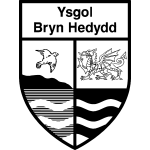ESTYN
The inspection process
How often are maintained schools and pupil referral units (PRUs) inspected?
Maintained schools and PRUs will have both a core inspection and an interim visit within a 6-year inspection period. The current 6-year inspection period is from September 2024 to July 2030.
What can learners expect during an inspection?
Our inspection teams spend time out and about talking to both staff and learners in classrooms, dinner halls, playgrounds and around the site to find out what learners think and feel about their education setting and their learning experience.
Before the inspectors arrive, there is an opportunity for learners to give feedback through an online questionnaire and similarly, parents and carers are invited to share their views through a questionnaire and at a face to face parents meeting with inspectors.
Inspection areas:
The following section explains what each inspection area covers and what inspectors need to keep in mind when evaluating each one. The inspection areas are numbered 1 – 3, but they are all equally important. The inspection report will cover all 3 inspection areas. It will always report on all the main foci but not necessarily in the order of this handbook. The main foci for each inspection area are:
1. Teaching and learning
Focus: How effectively does the school’s/PRU’s curriculum, teaching and assessment support all pupils, including those at risk of adverse outcomes, for example those pupils affected by poverty, with ALN or other identified barriers, to make progress, to:
• learn and make progress?
• develop their knowledge, skills and understanding?
• develop positive attitudes to learning?
• develop their Welsh language skills?
2. Well-being, care, support and guidance
How effectively does the school/PRU ensures that all pupils, including those at risk of adverse outcomes, for example those pupils affected by poverty, with ALN or other identified barriers to progress:
• are safe and secure?
• attend school regularly?
• are respected and fairly treated?
• develop leadership skills and take on responsibility?
• receive the guidance and support they require for the next steps in their development.
3. Leading and improving
Focus: How effectively do leaders: • ensure that all pupils learn and make progress? (This includes those at risk of adverse outcomes, for example those pupils affected by poverty, with ALN or other identified barriers to learning.)
• develop a culture, inclusive ethos and strategic direction that support the progress and well-being of all pupils?
• identify and address areas for improvement, including addressing previous recommendations?
• address national priorities, including improving the quality of teaching and the development of the Welsh language?
• ensure that professional learning improves the quality of teaching, supports school improvement and equips all staff to carry out their roles?
• manage the school’s/PRU’s resources?
What’s the difference between a core inspection and an interim visit?
Interim visits are not intended to draw overall conclusions about the effectiveness of the school, but they will support leaders to review progress since the last core inspection and consider their next steps for improvement.
The outcome of inspection
How are results communicated to parents and carers?
Following a core inspection, reports are published on our website 45 days after the start of the inspection. This provides an overview of the findings of the inspection team and highlights strengths as well as areas for improvement. We no longer give overall summative gradings such as ‘Excellent’, ‘Good’, Adequate’ or ‘Unsatisfactory’ but our reports contain a summary of key findings. We also publish a more concise report specifically for parents and carers alongside the full inspection report.
Following an interim visit, we will provide feedback to the headteacher and publish a short letter on our website summarising the outcome of the visit. We will also provide some feedback to the school or PRU on the next steps in their improvement process.
What happens if the school or PRU needs follow-up activity?
During core inspections, the inspection team will consider whether the school or PRU needs any follow-up activity. There are two types of statutory follow-up activity:
- Special measures
- Significant improvement
Special measures and significant improvement require monitoring activity by Estyn inspectors, who will visit the school or PRU to evaluate the progress. Currently we do not publish details of interim monitoring activities during follow-up. This is because these visits are developmental in nature. We will publish a report once a maintained school or PRU is out of follow-up, or if they move from one follow-up activity to another.
Sectors other than maintained schools and PRUs have different follow-up arrangements. These may include statutory and non-statutory follow-up monitoring.
